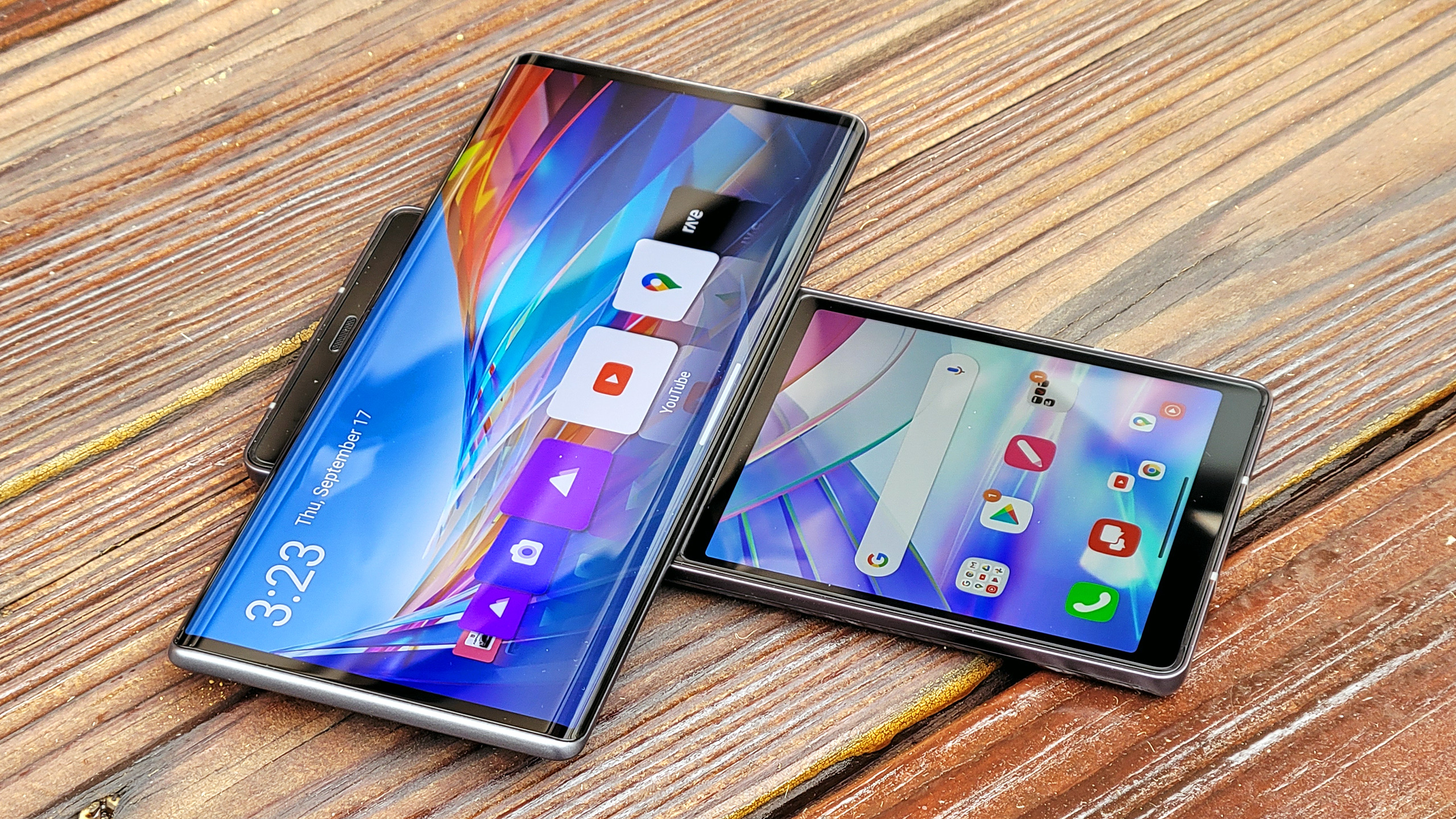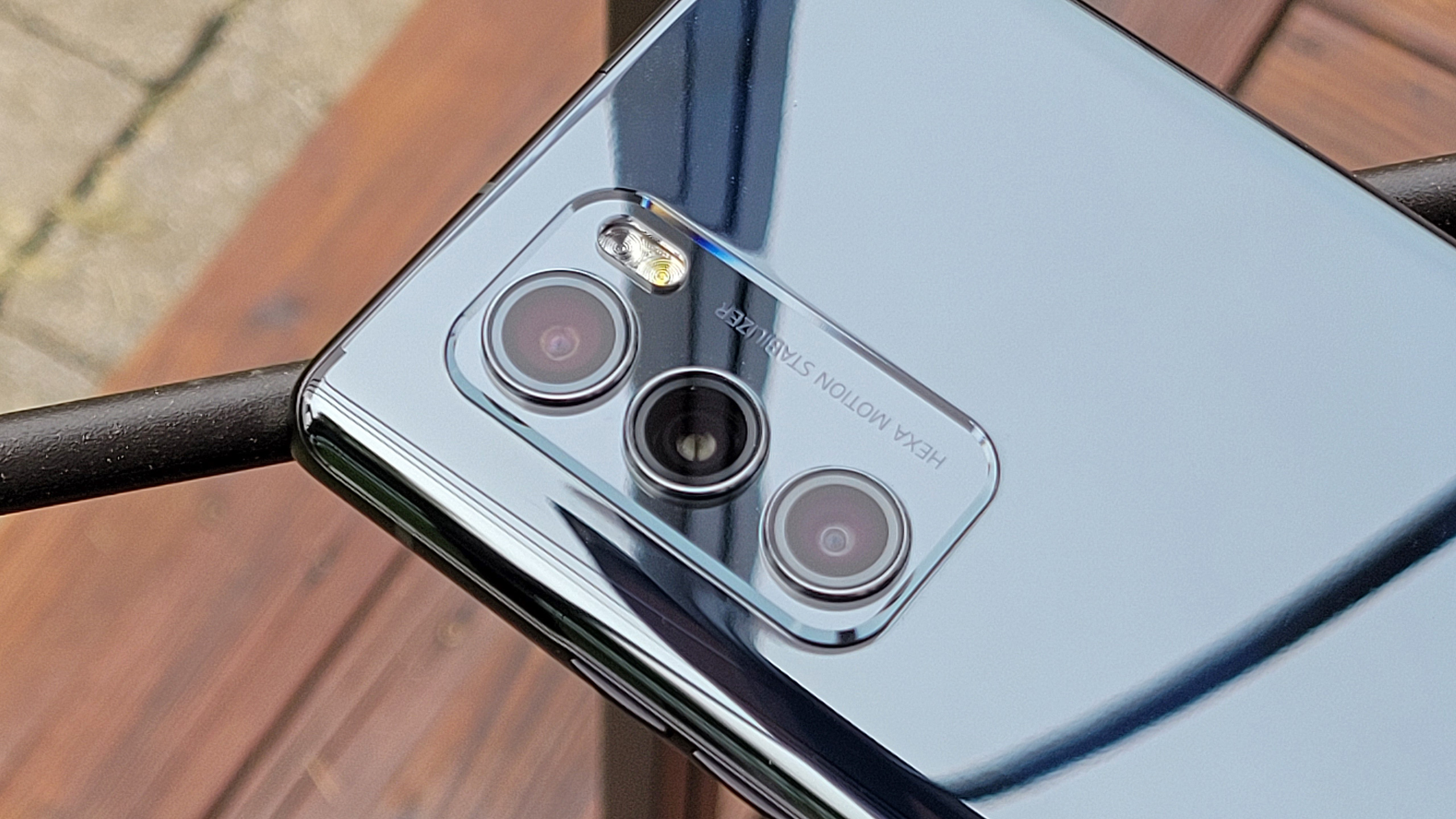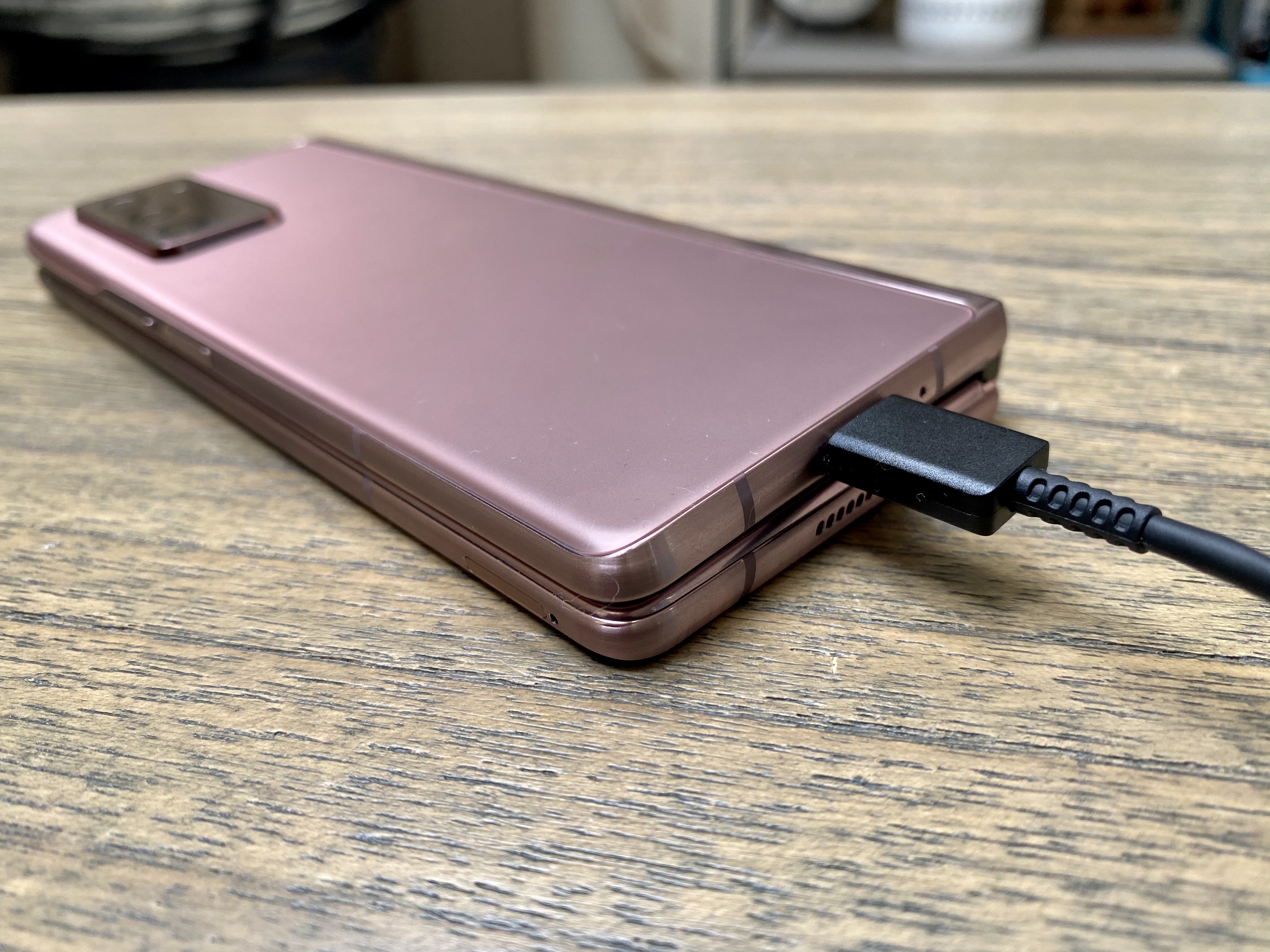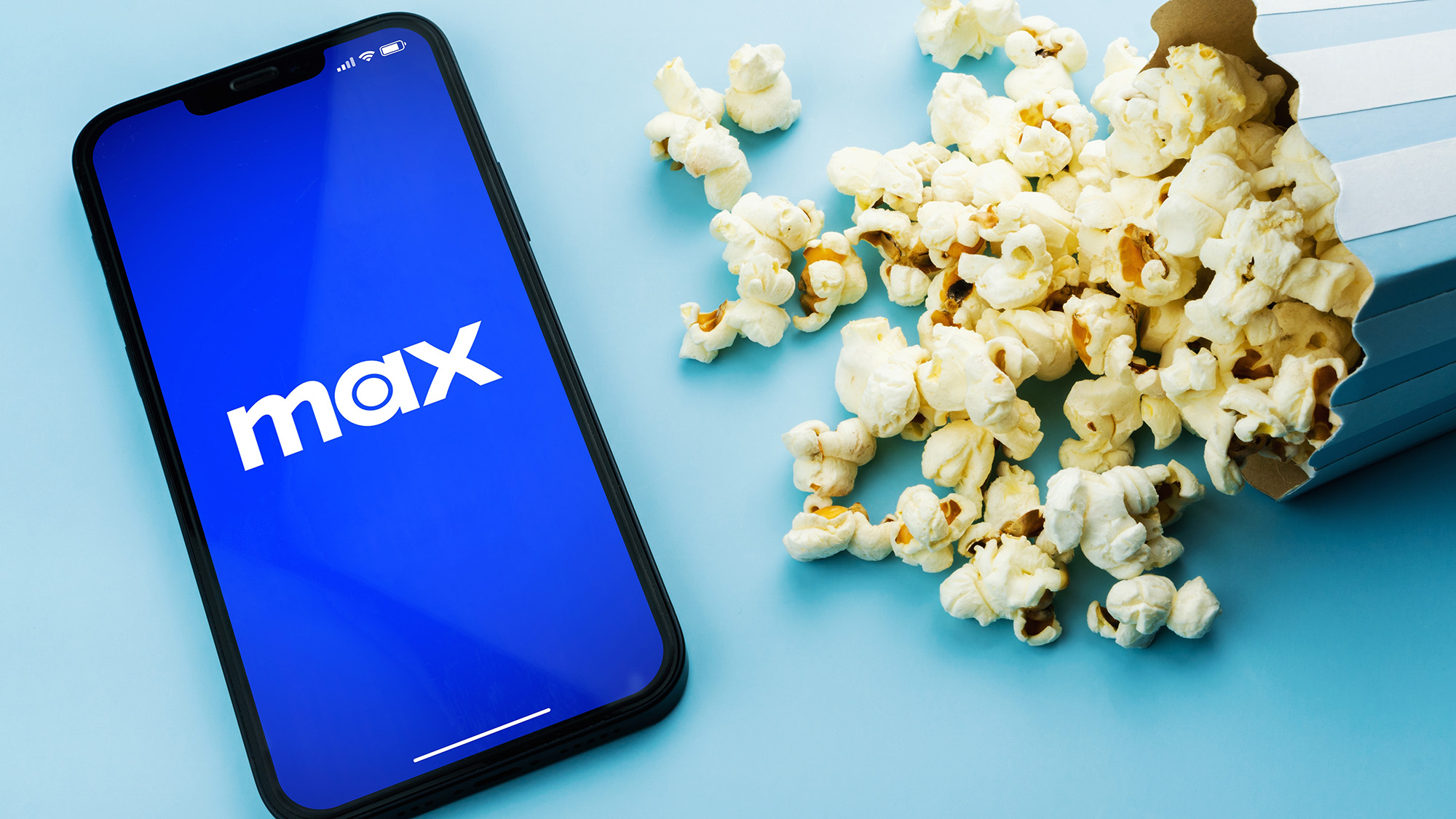LG Wing vs Samsung Galaxy Z Fold 2: Which dual-screen phone wins?
The LG Wing and Samsung Galaxy Z Fold 2 deliver multiple screens in different ways — but which does it better?

If nothing else, phone makers this year are showing us there's more than one way to flip around a device's screen.
You could go the conventional route, as Samsung did with the Galaxy Z Fold 2. This follow-up to the original Galaxy Fold, flips open like a book to reveal a larger, tablet-sized screen. The idea with the Galaxy Z Fold 2 is to carry around the device and use it like a traditional smartphone — an exterior cover display makes this possible — and then open it to use the larger panel when you need to get some serious work done.
- Best Android phones
- Galaxy Note 20 Ultra vs. Galaxy Z Fold 2: The ultimate Samsung phone battle
It's the LG Wing where things get a little funky. More of a dual-screen device than a folding phone, the LG Wing tucks its second screen behind the primary display. When you need a second display for multitasking or house playback or gaming controls, that panel swivels out, giving the LG Wing a t-shape.
That's two very different approaches to phone design. But which one yields the best results? To find out, we're conducting an LG Wing vs. Samsung Galaxy Z Fold 2 face-off to find out who produces the better multi-screen experience.
LG Wing vs. Samsung Galaxy Z Fold 2: Specs
| Row 0 - Cell 0 | LG Wing | Samsung Galaxy Z Fold 2 |
| Price | $999 | $1,999 |
| Screen size | 6.8-inch OLED (main), 3.9-inch OLED (secondary) | 7.6-inch, 120Hz OLED (main), 6.2-inch OLED (exterior) |
| CPU | Snapdragon 765G | Snapdragon 865 Plus |
| RAM | 8GB | 8GB |
| Storage | 256GB | 256GB |
| Expandable storage? | Yes, up to 2TB | No |
| Rear cameras | 64MP wide, 13MP ultrawide, 12MP ultrawide with gimbal | 12MP wide, 12MP ultra-wide, 12MP telephoto |
| Front cameras | 32MP | 10MP (cover screen), 10MP (main display) |
| 4,000 mAh | 4,500 mAh | |
| Size | 6.67 x 2.93 x 0.43 inches | 6.2 x 2.6 x 0.66 inches (closed); 6.2 x 5 x 0.27 inches (open) |
| Weight | 9.74 ounces | 9.9 ounces |
LG Wing vs. Samsung Galaxy Z Fold 2: Price and availability
Samsung's foldable phones command a premium, and there's no higher price than what you'll pay for the Galaxy Z Fold 2. That phone costs $1,999, and it's currently available at all the major wireless carriers.
You'll be able to pick up an LG Wing for much less than the Galaxy Z Fold 2. At $999, LG's phone costs $1,000 less than Samsung's foldable. Verizon will offer the phone first on Oct. 15, though it will come to AT&T and T-Mobile at a later date. Pre-orders are live through Verizon now.
LG Wing vs. Samsung Galaxy Z Fold 2: Design
You couldn't find two more differently designed phones trying to achieve similar purposes in an LG Wing vs. Samsung Galaxy Z Fold 2 comparison. Both devices are aimed at giving you more screen to work with, but approach that goal in different ways.
Sign up to get the BEST of Tom's Guide direct to your inbox.
Get instant access to breaking news, the hottest reviews, great deals and helpful tips.

Though it ultimately offers more screen space, the Galaxy Z Fold 2 is more compact than the LG Wing, at least when it's folded up into its 6.2 x 2.6 x 0.66-inch frame. Unfolded, the Galaxy Z Fold 2 is 5 inches wide and 0.27 inches thin while maintaining the same height. It weighs a little more than the LG Wing — 9.9 ounces vs. 9.74 ounces.
LG uses an aluminum frame and mirrored glass back to give the Wing a sophisticated look. Yet, once we stack the phones up side by side, we're pretty sure the Galaxy Z Fold 2 will feel like the more polished device, thanks to its layer of Ultra Thin Glass that makes the display feel more durable than Samsung's original foldable phone.

Speaking of durability, LG says the swivel motion that lets the main panel swing out of the way to reveal the secondary screen is built to last up to 200,000 times. That's a lot of swiveling into dual screen mode. In the case of the Galaxy Z Fold 2, everything hinges on... well, a hinge. Specifically, Samsung has redesigned the hinge on this foldable, adding a CAM mechanism that allows you to open the phone in multiple positions. The gap between the two sides of the phone — which caused so much trouble with the original Fold — is now more narrow when the Z Fold 2 is closed shut.
LG Wing vs. Samsung Galaxy Z Fold 2: Display
Both phones include multiple displays, and in the case of the Galaxy Z Fold 2, one of them makes a world of difference. Samsung has expanded the phone's external display to be a 6.2-inch screen that basically covers the outside of the phone. It's a more useful panel than the tiny 4.6-inch outer display on the old Fold, making it big enough to support any task.

The interior display of the Galaxy Z Fold 2 is better as well. Samsung ditched the camera notch on the original fold, using a punch-hole cutout for the inside selfie cam. That allows the Fold 2's OLED screen to stretch out to 7.6 inches, without any notches getting in the way of things. That bigger display also supports a 120Hz refresh rate, meaning smoother scrolling text and more immersive gaming and video experiences (as well as a bigger drain on the battery, though we'll get to that in a bit).
Both displays on the LG Wing are OLED panels as well, with the 3.9-inch secondary display hiding behind the 6.8-inch main screen when you've got the phone in a more conventional layout. Unlike the Galaxy Fold 2’s main display, both the LG Wing’s panels lack higher refresh rates, making do with just 60Hz.

When it's time for a second screen, you can swivel the Wing’s main panel out of the way. How you use the secondary display depends on the way you hold your phone, with some activities best suited for the smaller panel to be on top, bottom or the side of the 6.8-inch screen.
LG Wing vs. Samsung Galaxy Z Fold 2: Cameras
If you thought the LG Wing and Samsung Galaxy Z Fold 2 took a different approach to displays, just wait until you get a load of their cameras. On paper, they seem the same — you get lenses and lots of them — but the functions are quite different.

Start with the Galaxy Z Fold 2, which includes a triple-lens rear setup. That means a 12MP main camera supported by a 12MP ultra wide angle lens and 12MP telephoto lens capable of a 2X optical zoom. The front cover display has a 10MP selfie cam and there's also a 10MP camera on the main display for taking self portraits when the phone is open.
You won't find a telephoto lens on the LG Wing's assortment of cameras. Instead, alongside the 64MP main and 13MP ultra wide angle sensors, there's a second 12MP ultra wide angle lens — only this one's equipped with a gimbal. The gimbal can move automatically or you can manually control it using a virtual joystick on the secondary display, and it helps capture smoother video when you need to pan or stay focused on the subject at hand. The 32MP selfie cam pops up when it’s time to snap a self portrait.

We've yet to stage a photo face-off between the LG Wing and Galaxy Z Fold 2, but we've been impressed by the shots both phones have taken. The gimbal on the LG Wing can be a little intimidating at first, but it's fairly easy to use once you're familiar with different shooting modes, and it definitely helps with one-handed use. The Galaxy Z Fold 2 benefits from features like Dual Preview, in which both you and the person you're photographing can see a preview on the phone's different screens.
LG Wing vs. Samsung Galaxy Z Fold 2: Performance
In terms of performance, we'd expect the Samsung Galaxy Z Fold 2 to easily out-muscle the LG Wing, though we still need to benchmark LG's new device. That's because on paper at least, this shouldn't be much of a contest.
The LG Wing uses the Snapdragon 765G system-on-chip. which provides both capable performance and power efficiency. But Qualcomm offers an even better class of chipset — the 8 series — and that's what Samsung uses to power the Galaxy Z Fold 2. Samsung's foldable phone uses the Snapdragon 865 Plus, an overclocked version of the leading Qualcomm silicon, and the result has been some of the best benchmark numbers we've seen from an Android device.

When we tested the Galaxy Z Fold 2 using the Geekbench 5 general performance benchmark, the Galaxy Z Fold 2 logged a multicore score of 3,193. We saw better numbers from the Galaxy Note 20 Ultra and the Asus ROG Phone 3, but the Z Fold 2's performance is nothing to sneeze at. For context, a Snapdragon 765G-powered phone like the LG Velvet logged a 1,927 multicore score in Geekbench. We wouldn't expect the LG Wing to close the gap with the Z Fold 2 that much.
The LG Wing uses 8GB of RAM to the 12GB Samsung packs into the Galaxy Z Fold 2. Both phones ship with 256GB of on-board storage, but only the LG Wing lets you expand capacity with a microSD card.

Both of these phones also work with 5G networks. Even better, they work with all types of 5G networks. (Or at least the LG Wing will once it's available through AT&T and T-Mobile.)
LG Wing vs. Samsung Galaxy Z Fold 2: Battery and charging
Keeping multiple screens powered up is a tall task for any battery. LG is turning to a 4,000 mAh power pack for the LG Wing, and while we haven't put the phone through our battery test yet, the fact that it also uses a Snapdragon 765G is an encouraging sign. Other phones powered by that chipset have fared well on our test, as the 765G has proven to be very power efficient. LG also tells us that it optimized the power draw and general efficiency of the Wing to maximize how long the phone lasts on a charge.

That said, the Galaxy Z Fold 2 sets a pretty high bar to clear with the longevity provided by its 4,500 mAh battery. We had the phone surf the web continuously on its main display over cellular until it ran out of power. The Galaxy Z Fold 2 lasted 10 hours and 10 minutes, which is just ahead of the average for smartphones, but somewhat impressive for a phone with a 7.6-inch screen. Note that we got that result with the Z Fold 2's display set to a 60Hz refresh rate. Switching to 120Hz reduced the battery life by an hour and 5 minutes, though it’s not uncommon for phones with faster refresh rates to see such a drop.
The LG Wing supports Qualcomm's QuickCharge 4.0+ charging. We'll see how that translates to charge times, but the Galaxy Z Fold 2's 25W charger got a drained phone back to 46% after 30 minutes of charging. Both phones can charge wirelessly, and Samsung's supports a reverse charging feature that allows it to top off other Qi-compatible devices.
LG Wing vs. Samsung Galaxy Z Fold 2: Special features
Despite their different approaches, the LG Wing and Galaxy Z Fold 2 both try to incorporate new features tied to their unusual designs.
In the case of the LG Wing, that means different uses for the secondary screen depending on how your phone is oriented. Watch a YouTube video in landscape mode on the main display, and the secondary screen will house playback controls. Similarly, run the Google Maps map in portrait mode on the larger display, and that secondary panel can field phone calls or run a music app for tunes to accompany your journey.

LG has designed the Wing’s multi-screen experience such that any app can display on the smaller panel, though some may require whitelisting in the device’s settings first. You can also designate app pairs, such that two apps of your choosing launch in tandem when you tap on a shortcut.
Because you can open the Galaxy Z Fold 2 at a 90 degree angle, you can set up a Flex mode where different app functions appear on different halves of the interior display. The Z Fold 2's massive screen also means you can multitask with three apps running at once. And app continuity lets you use an app on the outer cover display, then pick up where you left off when you open the phone.

Both phones run on Android 10, although Samsung has recently issued a public beta for its One UI interface based on Android 11. That beta isn't available to the Galaxy Z Fold 2 yet.
LG Wing vs. Samsung Galaxy Z Fold 2: Outlook
Our LG Wing vs. Galaxy Z Fold 2 face-off finds two devices that really serve different purposes. While LG has built a phone that's designed to offer up a secondary screen for better controls and at-glance looks into other apps when you need them, the Galaxy Z Fold 2 seems more designed for multitaskers who want to carry around a tablet that can close up into the form factor of a smartphone. The gimbal lens on the LG Wing may make that phone more suitable for people who capture a lot of video, though.
Those are just our first impressions on how these phones measure up. We'll have more to say about both the LG Wing and Galaxy Z Fold 2 once we've performed more extensive tests on LG's latest dual-screen device.
Philip Michaels is a Managing Editor at Tom's Guide. He's been covering personal technology since 1999 and was in the building when Steve Jobs showed off the iPhone for the first time. He's been evaluating smartphones since that first iPhone debuted in 2007, and he's been following phone carriers and smartphone plans since 2015. He has strong opinions about Apple, the Oakland Athletics, old movies and proper butchery techniques. Follow him at @PhilipMichaels.

